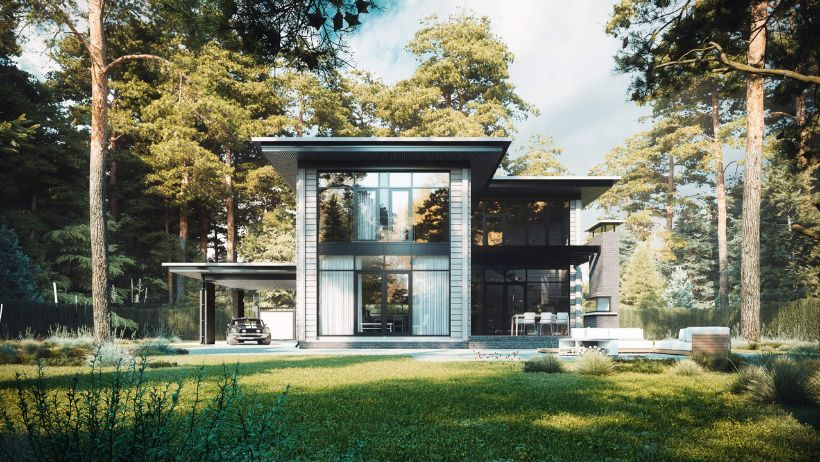If you’re a 3D artist, 3D designer, or architectural visualizer, you’ve likely heard the term 3D exterior rendering many times. It’s one of the most powerful tools in architectural visualization today. But what exactly is it? How does it work? And why is it essential for professionals like you? In this blog, we’ll walk you through everything you need to know about 3D exterior rendering. Now, let’s get started!
What is 3D Exterior Rendering?
3D exterior rendering is the process of creating photorealistic images or animations of the outside part of a building using computer software. In other words, it transforms flat architectural drawings into visually rich 3D scenes. These renderings help clients, architects, and designers see exactly what a building will look like before it’s even built.
Whether it’s a modern house or a shopping mall, 3D exterior rendering makes it possible to view materials in a single image.
Why It Matters:
- It improves communication between architects and clients.
- It allows early design feedback and saves revision time.
- It enhances marketing and promotional efforts for real estate projects.
In short, 3D exterior rendering is the bridge between imagination and reality.
3D Exterior Rendering Process
Now that we understand what it is, let’s explore how the 3D exterior rendering process works. While software and styles may vary, the steps remain mostly the same:
#1. Gathering Information
The first step in any 3D exterior rendering project is gathering references, architectural drawings (CAD files, floor plans, elevations), and any specific client requirements. This includes materials, colors, and even the environment.
#2. Modeling
In this phase, 3D artists build a digital 3D model based on the blueprints or sketches. The geometry must be accurate to reflect the structure’s proportions and design details.
#3. Texturing and Materials
Textures give surfaces their realistic appearance. Brick, wood, glass, or concrete—every detail matters. Artists apply materials to make the 3D model look like it belongs in the real world.
#4. Lighting
Lighting brings everything to life. Whether it’s natural daylight, golden hour, or night scenes, lighting setup is crucial in 3D exterior rendering. It affects shadows, reflections, and overall mood.
#5. Environment Setup
Adding background elements like trees, roads, cars, or neighboring buildings helps ground the structure in its real-world context.
#6. Rendering
This is the process of converting the 3D scene into a 2D image. Depending on the complexity, this could take minutes or hours. The goal is to generate high-quality visual output.
#7. Post-Production
In this final step, artists enhance the image using software like Photoshop. Color correction, sky replacements, and subtle effects make the final render even more appealing.
How Long Does It Take to Do 3D Exterior Rendering?
This is one of the most common questions in the industry. The answer? It depends. The time required for 3D exterior rendering depends on several factors:
- Project complexity: A small house takes less time than a complex resort.
- Level of detail: More materials, trees, cars, and lighting setups require more work.
- Rendering resolution: Higher resolutions take longer to compute.
- Hardware power: Faster GPUs = faster render times.
As a rough guide:
- A basic 3D exterior rendering might take 8–16 hours.
- A detailed project with multiple angles could take 2–4 days.
- Complex animations may take a week or more.
That said, new rendering technologies and GPU rendering have significantly reduced time compared to a few years ago.
Need Rendering Faster?
Cloud-based platforms like 3S Cloud Render Farm let you render your projects using powerful servers—much faster than your local machine. With GPU clusters running in parallel, even heavy exterior rendering tasks can be completed in a fraction of the time.
Benefits of using cloud rendering for 3D exterior rendering:
- No need to upgrade your hardware.
- Faster turnaround time for multiple views or animations.
- Reliable performance even for high-resolution renders.
- Easy plugin integration with popular software like Blender, 3ds Max, Maya, and more.
If speed and efficiency matter to you, using a render farm is a game-changer for any 3D exterior rendering workflow.
>>> Read more: How to Create a Walking Animation for Characters in Blender
